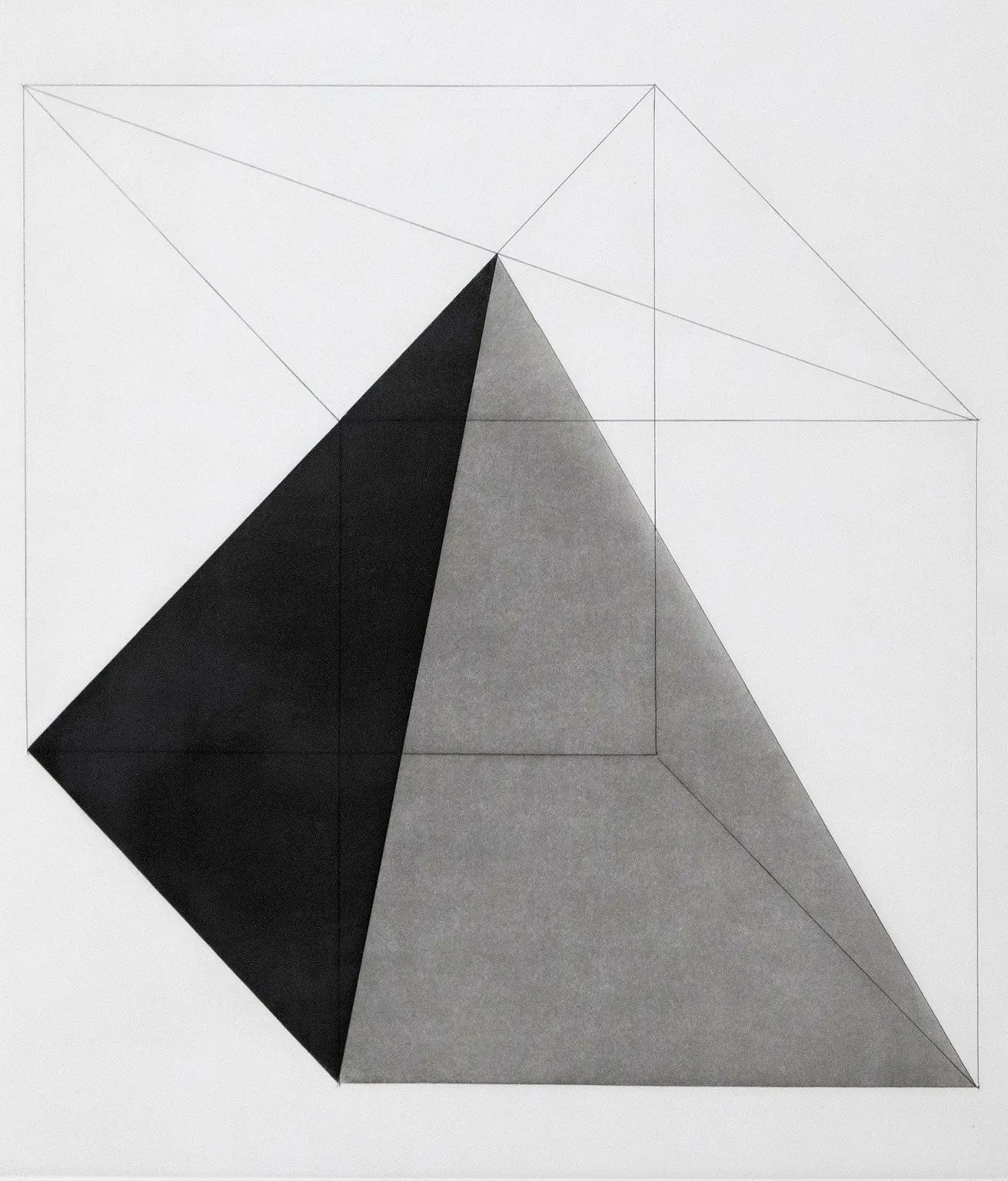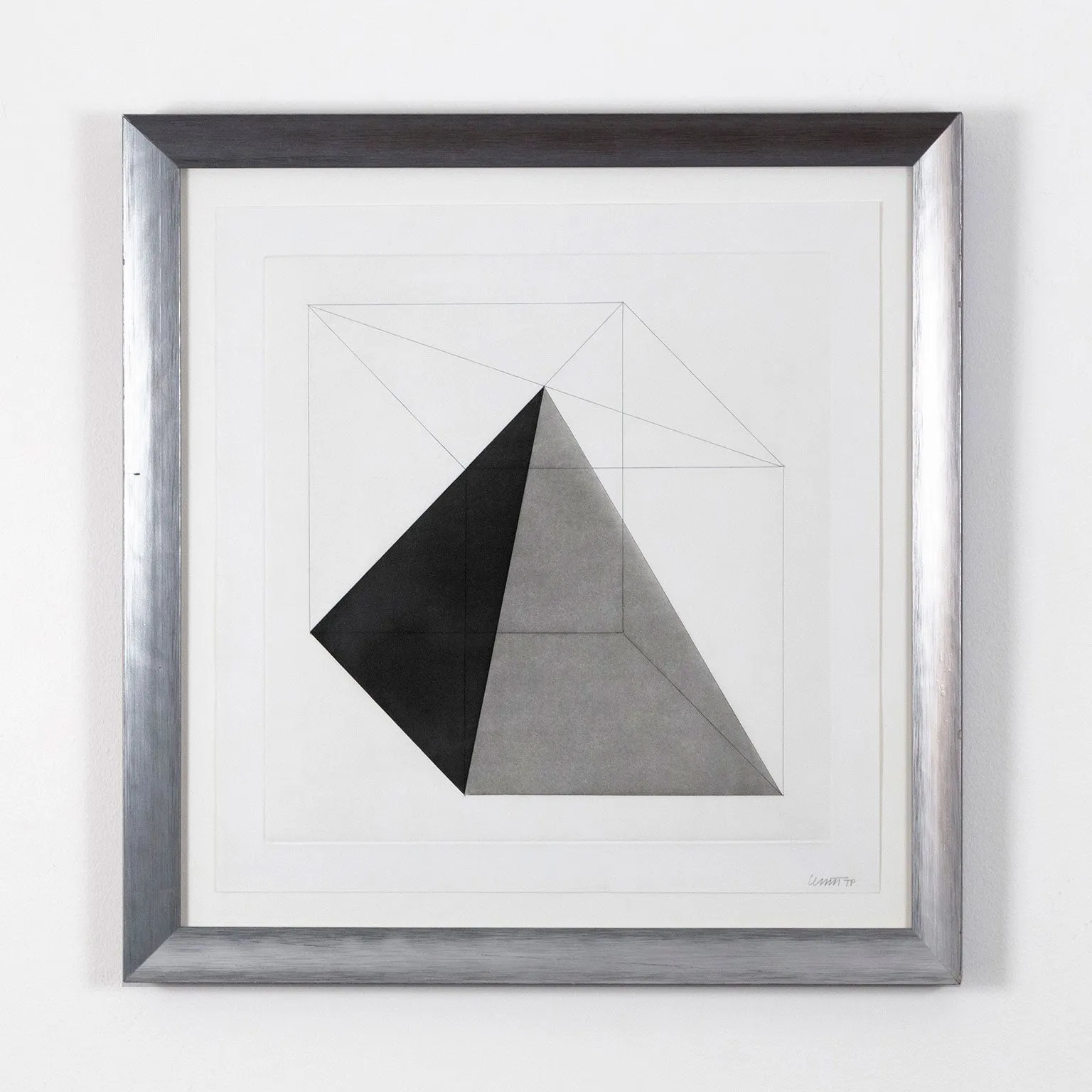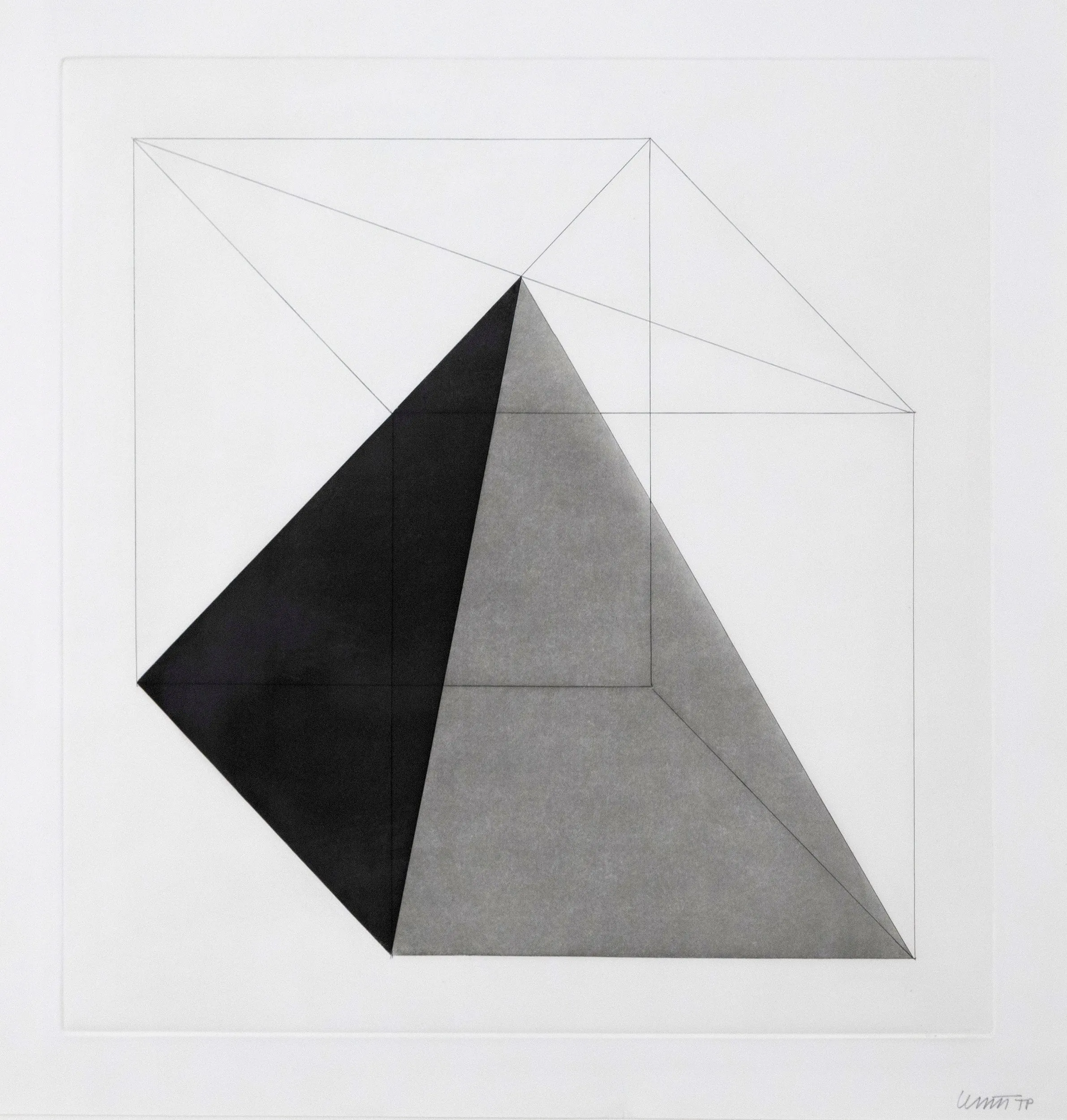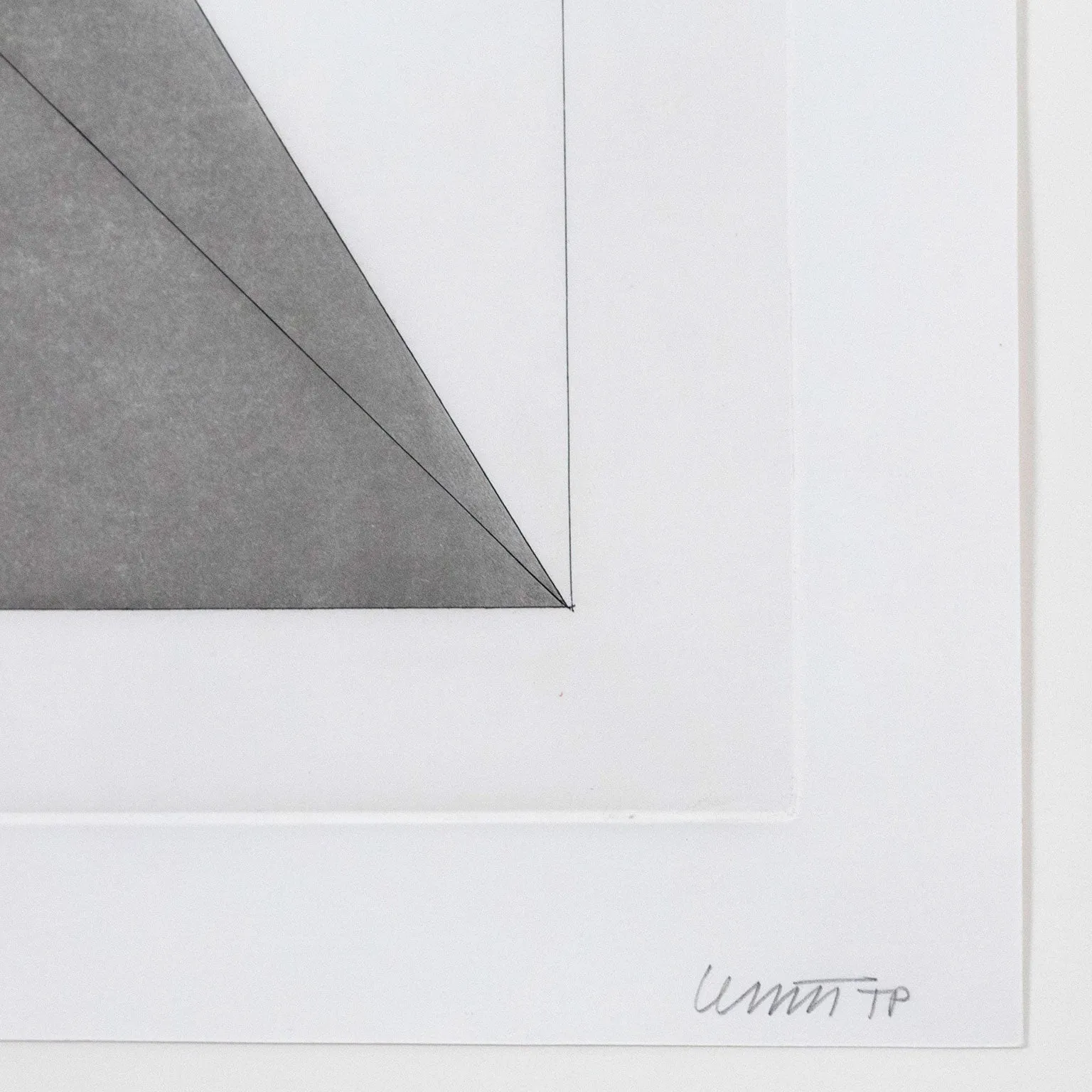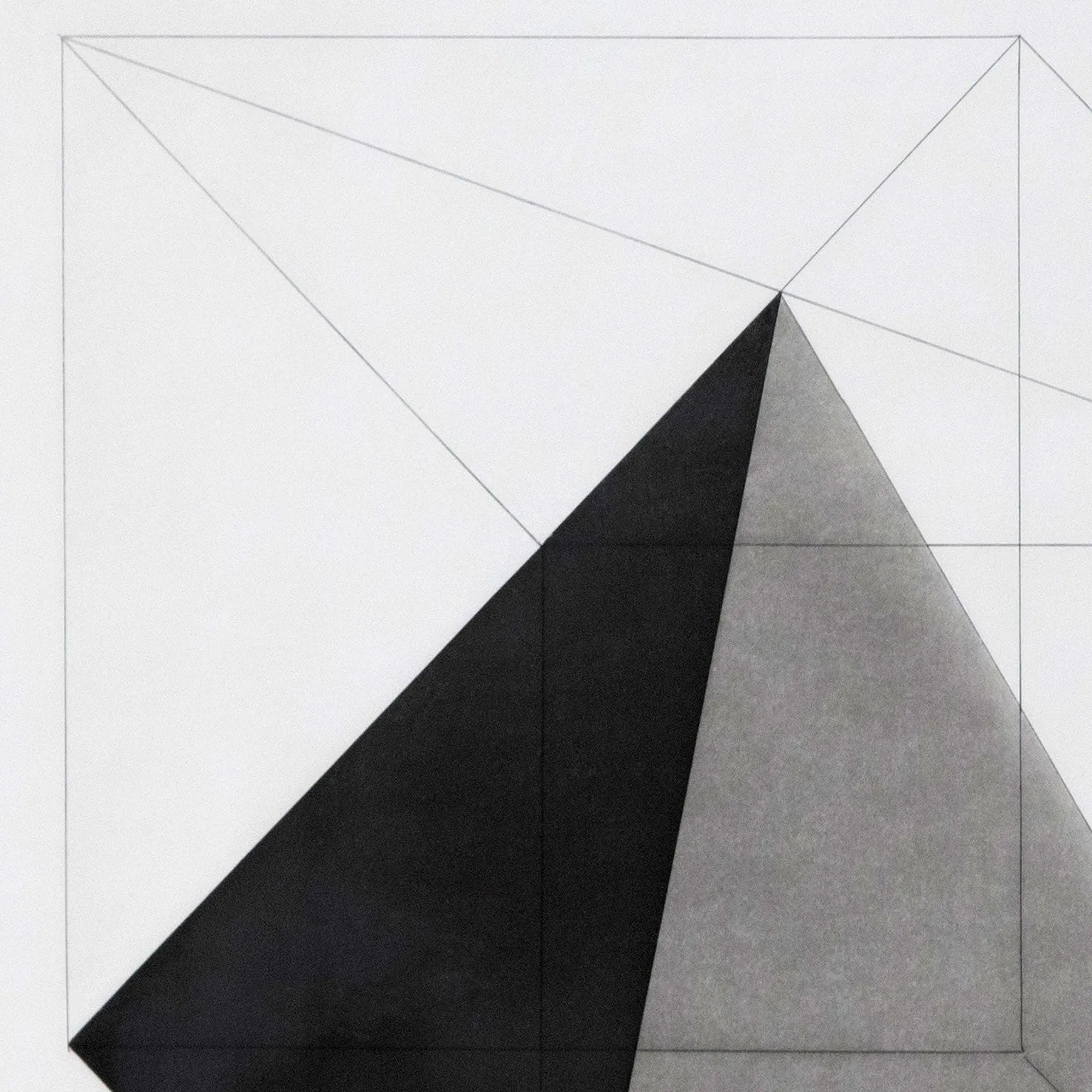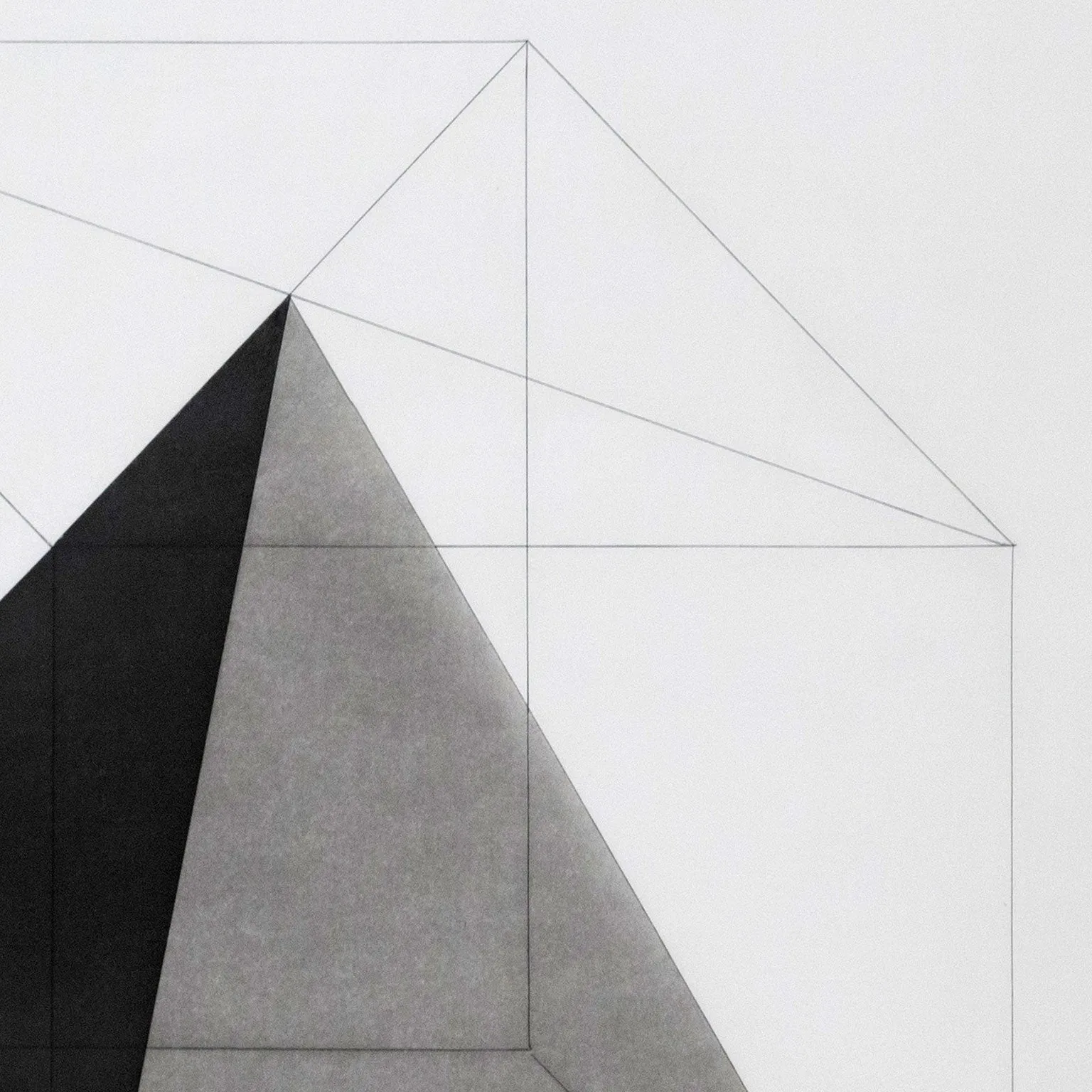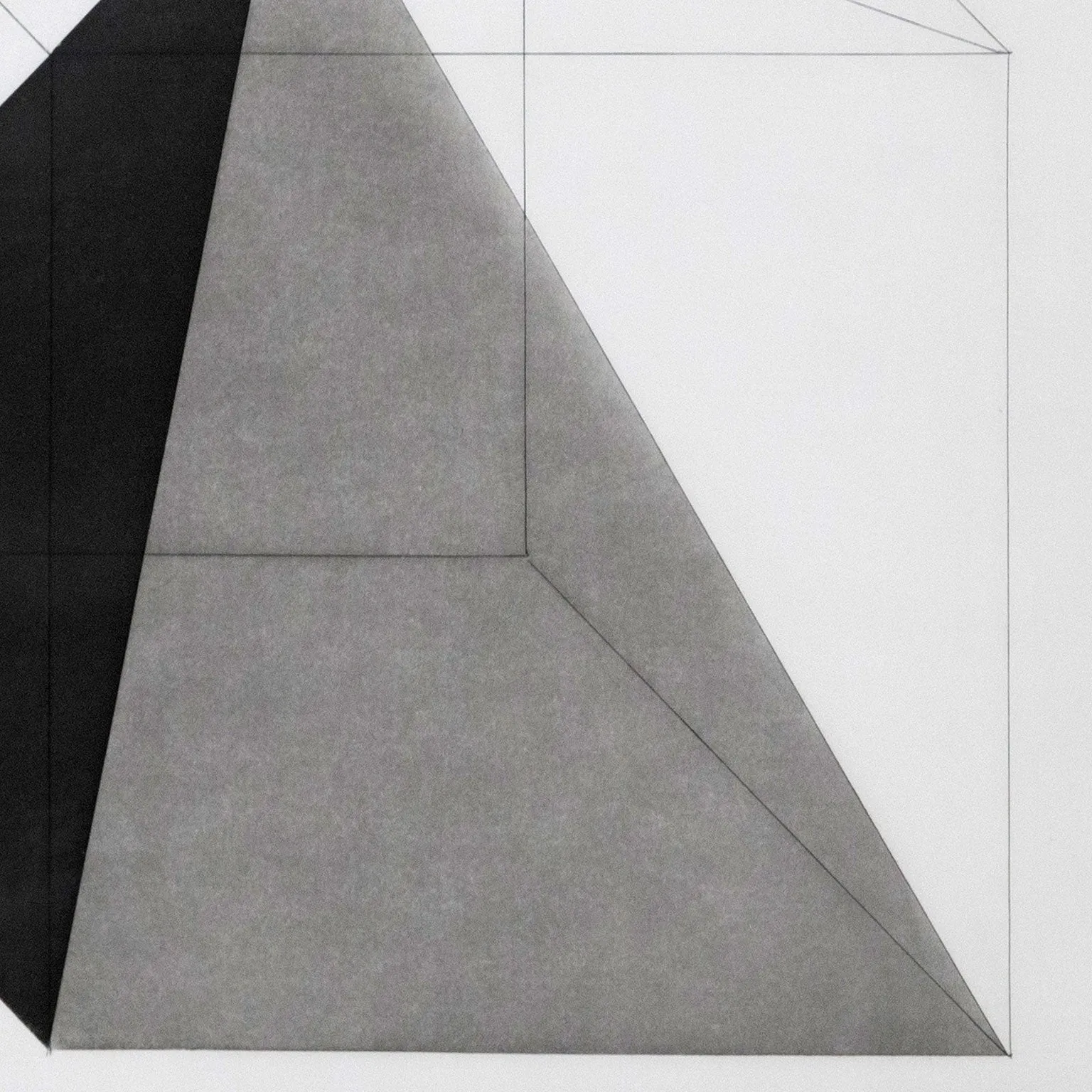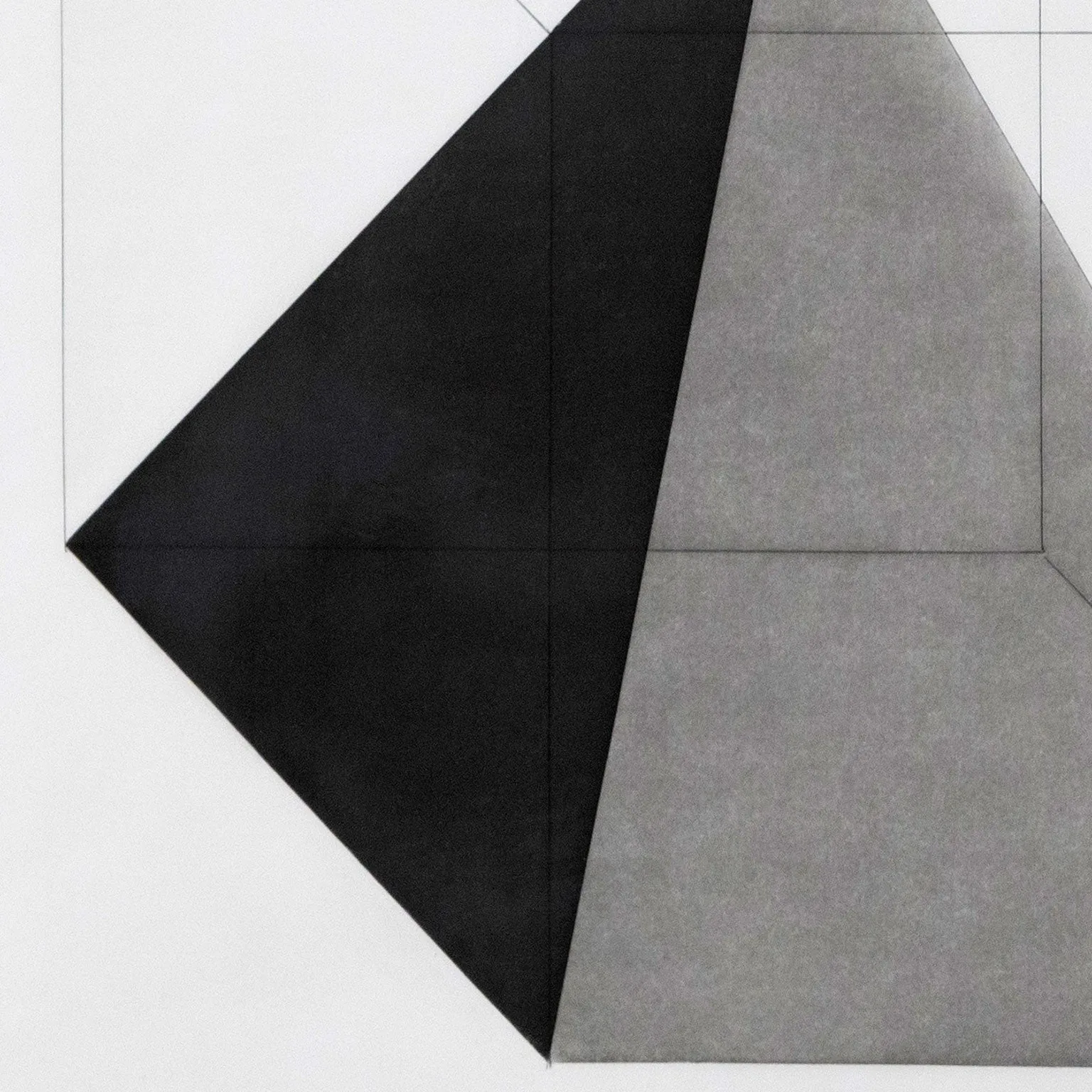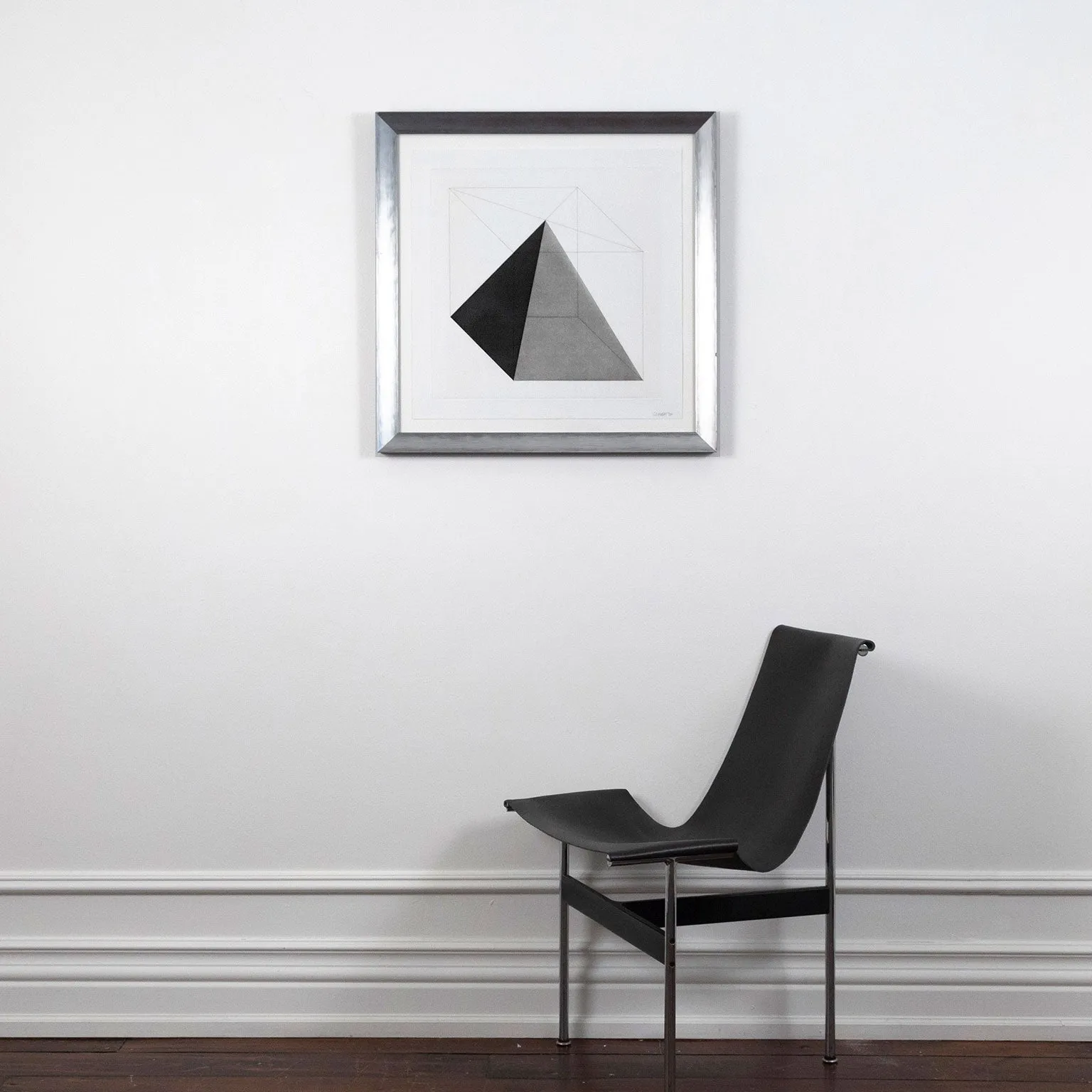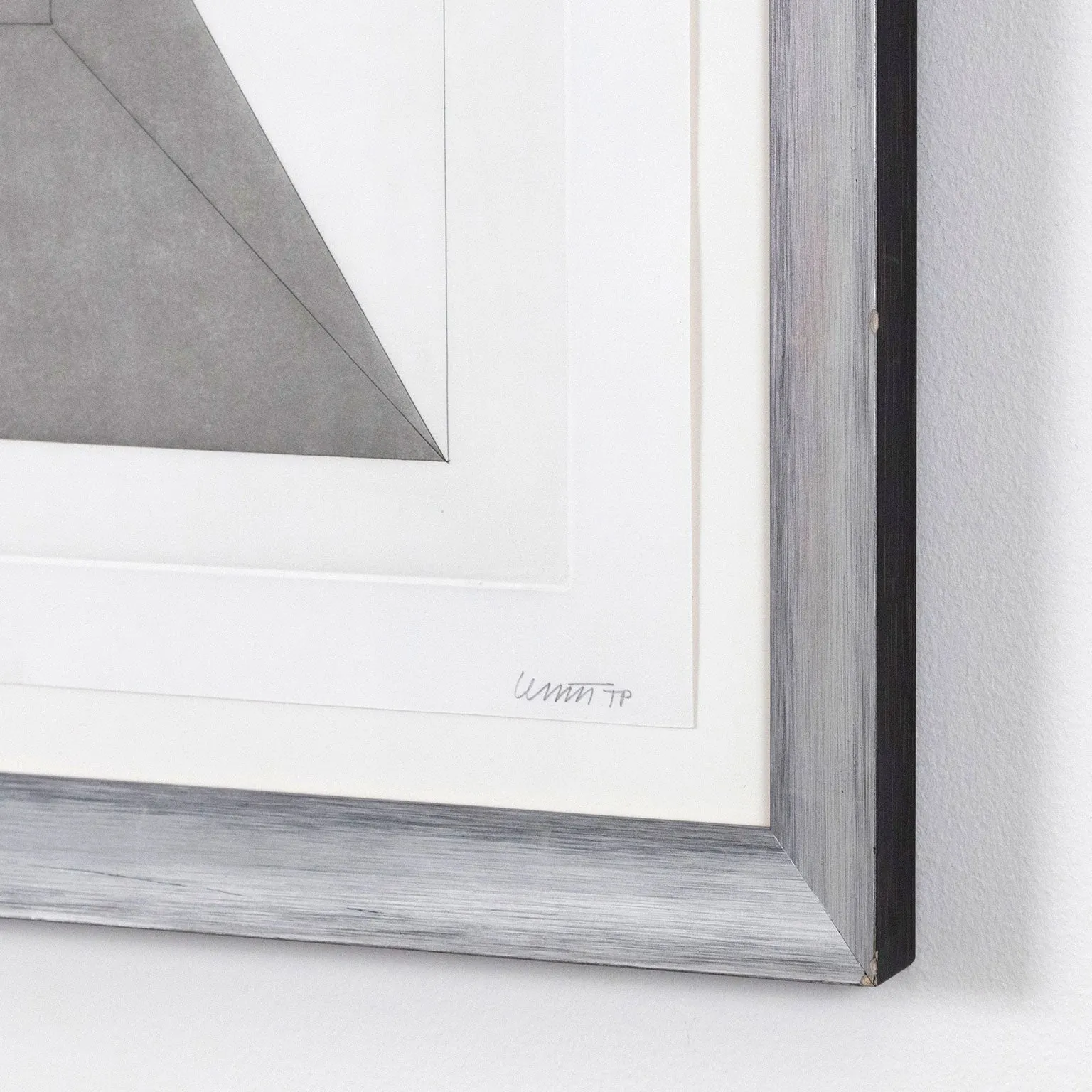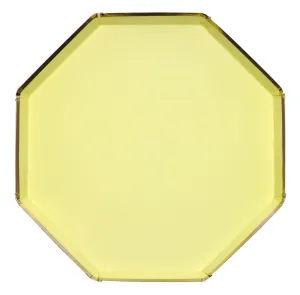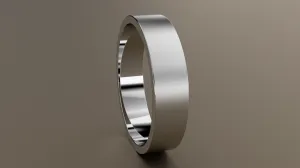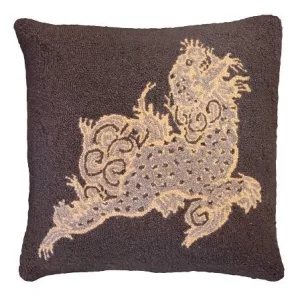(1928-2007) is an important contributor to the 20th century's most cerebral "isms" notably minimalism and conceptual art.
Many of his works were created from elaborate and detailed instructions rather than his own hand or labor. His (in)famous large-scale "wall drawings" for example, destabilized and expanded the conventional definition of authorship as they were executed by teams using instructions. Furthermore these classic "wall drawings" were often temporary - only lasting the duration of an exhibition.
Influenced by his time as an architect, LeWitt's artistic practice was rooted in a deep appreciation of geometric forms. Utilizing ratios, patterns, and formulas, the artist would geometric, abstract works across many mediums.
"Forms Derived from a Cube" is an exciting series that exemplifies LeWitt's nearly scientific approach to exploring shape. This work features a pyramid encased by grid-based drafting reminiscent of a blueprint.
The pyramid is transformed through a series of lines and angles that divide the shape into fractions as if to reveal its complete geometric potential. Through his meticulous line work, LeWitt creates an illusion of depth and space that transcends the work's two-dimensional surface.
of how LeWitt presents a dynamic shape contained within a transparent cube.
Given the limited edition size of this series, it is quite uncommon to find individual prints for sale.
This work can be found in the permanent collection of the , , , and to mention a few.
Questions about this piece? Contact us or call 1.416.704.1720
"Forms Derived from a Cube"
USA, 1982
Etching with aquatint on Somerset Satin White paper
Signed and inscribed "T.P." (trial proof) in pencil, lower right
Artist proof, aside from an edition of 24
20.5"H 20.75"W (work)
Printed by Jeryl Parker Editions, New York.
Published by Multiples, Inc., New York.
Very good condition.
Note: this work is sold unframed.

